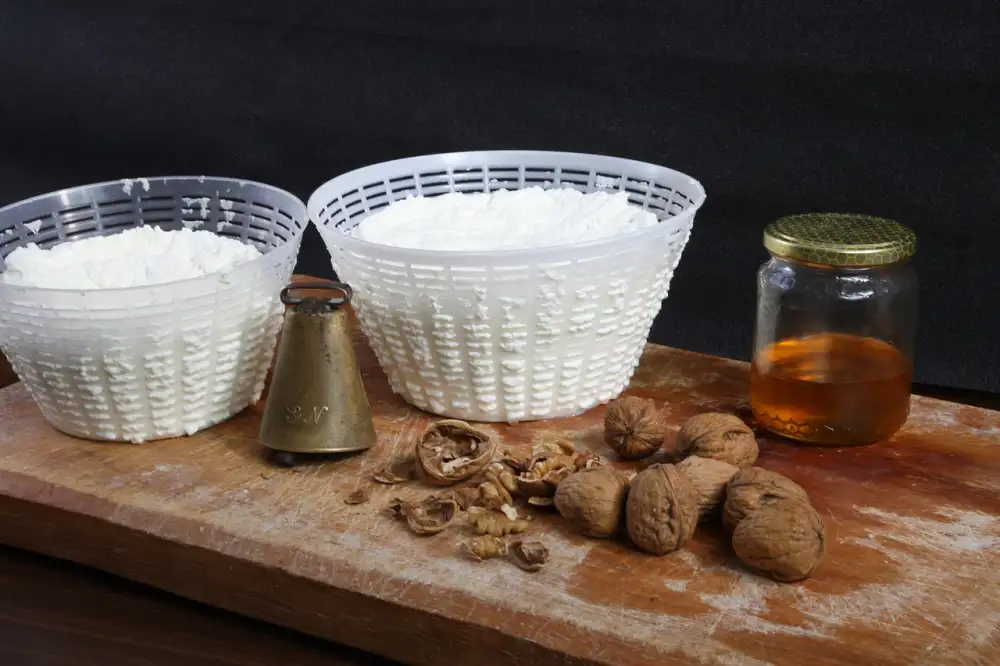Crafting Creamy Perfection: A Step-by-Step Guide on How to Make Ricotta Cheese at Home

Ricotta cheese, a staple in Italian cuisine, is a creamy and versatile cheese known for its delicate texture and slightly sweet flavor. Despite its name, which means "recooked" in Italian, ricotta is not technically a cheese but rather a dairy product made from the whey leftover during the production of other cheeses like mozzarella or provolone. Ricotta is often used in both savory and sweet dishes, adding richness and depth to recipes ranging from lasagna to cannoli. Making ricotta at home allows you to experience the freshness and quality of this beloved ingredient firsthand.
Ingredients Required
**Ingredients Required:**
To make homemade ricotta cheese, you will need just a few simple ingredients that are likely already in your kitchen. The basic ingredients include whole milk, acid (such as lemon juice or white vinegar), and salt. For those looking to add a touch of richness, heavy cream can also be used. These staple ingredients come together to create a creamy and flavorful ricotta cheese that is perfect for both sweet and savory dishes.
Steps to Make Ricotta Cheese
1. Heat the Milk: Start by heating whole milk in a large pot over medium heat until it reaches around 185°F. Stir occasionally to prevent scorching.
2. Add Acid: Once the milk reaches the desired temperature, add your chosen acid, such as lemon juice or white vinegar, and stir gently for about 1-2 minutes. The acid helps to separate the curds from the whey.
3. Strain the Curds: After adding the acid, let the mixture sit undisturbed for about 10-15 minutes to allow the curds to form. Then, carefully strain the mixture through a cheesecloth-lined sieve or colander to separate the curds from the whey.
These simple steps will yield delicious homemade ricotta cheese that is perfect for enhancing your favorite dishes with its creamy texture and subtle flavor profile.
Heat the Milk
When making ricotta cheese at home, the first step is to heat the milk. Start by pouring whole milk into a large pot and placing it over medium heat. Stir the milk occasionally to prevent it from scorching on the bottom of the pot. Use a thermometer to monitor the temperature and heat the milk until it reaches around 185°F (85°C). Heating the milk helps denature the proteins, allowing them to coagulate more easily when an acid is added later in the process. Be patient and avoid boiling the milk, as this can affect the texture of your ricotta cheese.
Add Acid
To create ricotta cheese at home, the next step after heating the milk is to add acid. This can be done by mixing in either lemon juice or white vinegar. The acid helps to separate the curds from the whey in the milk, resulting in the creamy texture of ricotta cheese. Stir gently after adding the acid and let it sit for a few minutes to allow the curds to form fully. The mixture will start to look slightly grainy as the curds develop, signaling that it's ready for straining.
Strain the Curds
After adding the acid to the heated milk, you will start to see curds forming. Allow the mixture to sit undisturbed for about 10-20 minutes to let the curds fully develop. Next, carefully ladle the curds into a cheesecloth-lined strainer set over a bowl. Let the whey drain off for approximately 1-2 hours, depending on how creamy you want your ricotta to be. The longer you let it strain, the thicker and creamier your ricotta will become. Remember to save the whey as it can be used in other recipes or discarded if not needed.
Tips for Making Ricotta Cheese at Home
1. Use whole milk for a creamier texture and richer flavor.
2. Be patient when heating the milk to avoid scorching it.
3. Choose high-quality acid sources like lemon juice or white vinegar.
4. Stir gently when adding the acid to prevent breaking up the curds too quickly.
5. Let the curds sit undisturbed for at least 10-15 minutes to ensure proper separation.
6. Use a fine mesh strainer or cheesecloth for optimal draining of the curds.
7. Don't discard the whey; it can be used in baking or cooking for added nutrition.
8. Store homemade ricotta cheese in an airtight container in the refrigerator for up to one week.
By following these tips, you can master the art of making creamy and delicious ricotta cheese right in your own kitchen!
Serving Suggestions
Ricotta cheese is a versatile ingredient that can be enjoyed in various ways. One classic way to savor homemade ricotta is by spreading it on toasted bread or crackers, drizzling it with honey, and topping it with fresh herbs or a sprinkle of sea salt. Another popular option is to incorporate ricotta into pasta dishes such as lasagna, ravioli, or stuffed shells for a creamy and indulgent filling. Additionally, ricotta can be used in desserts like cannoli, cheesecakes, or as a topping for pancakes and waffles. The mild and creamy flavor of ricotta pairs well with both sweet and savory ingredients, making it a delightful addition to any meal.
In conclusion, making ricotta cheese at home is a rewarding and surprisingly simple process that allows you to enjoy the creamy and delicate flavors of this versatile cheese in your favorite dishes. By following the steps outlined in this guide and experimenting with different variations, you can elevate your culinary skills and impress your family and friends with homemade ricotta cheese that tastes fresh and delicious. So, roll up your sleeves, get ready to craft creamy perfection, and savor the love in every bite of your homemade ricotta cheese creation!
Published: 29. 03. 2024
Category: Recipes



